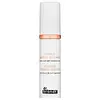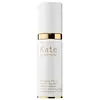What's inside
What's inside
 Key Ingredients
Key Ingredients

 Benefits
Benefits

 Concerns
Concerns

 Ingredients Side-by-side
Ingredients Side-by-side

Water
Skin ConditioningGlycerin
HumectantIsoamyl Laurate
EmollientDicaprylyl Carbonate
EmollientEthylhexyl Palmitate
EmollientGlyceryl Stearate
EmollientIsostearyl Neopentanoate
EmollientShea Butter Cetyl Esters
Skin ConditioningSorbitan Oleate
EmulsifyingCaprylic/Capric Triglyceride
MaskingCetyl Alcohol
EmollientStearyl Alcohol
EmollientRetinol
Skin ConditioningBakuchiol
AntimicrobialCeramide NP
Skin ConditioningSqualane
EmollientSodium Ascorbate
AntioxidantSodium Lactate
BufferingTocopherol
AntioxidantTocopheryl Acetate
AntioxidantPEG-40
HumectantHydrogenated Castor Oil
EmollientGlycine Soja Oil
EmollientXanthan Gum
EmulsifyingCucumis Sativus Fruit Extract
EmollientChamomilla Recutita Flower Extract
MaskingLavandula Angustifolia Flower/Leaf/Stem Extract
MaskingArctium Lappa Root Extract
Skin ConditioningAloe Barbadensis Leaf
MaskingAcacia Senegal Gum
MaskingJasminum Officinale Flower Extract
MaskingAcrylates/C10-30 Alkyl Acrylate Crosspolymer
Emulsion StabilisingSodium Citrate
BufferingTrisodium Ethylenediamine Disuccinate
Ethylhexylglycerin
Skin ConditioningButylene Glycol
HumectantPentylene Glycol
Skin ConditioningPropylene Glycol Alginate
Carbomer
Emulsion StabilisingSodium Hydroxide
BufferingBehenyl Alcohol
EmollientBenzyl Alcohol
PerfumingWater, Glycerin, Isoamyl Laurate, Dicaprylyl Carbonate, Ethylhexyl Palmitate, Glyceryl Stearate, Isostearyl Neopentanoate, Shea Butter Cetyl Esters, Sorbitan Oleate, Caprylic/Capric Triglyceride, Cetyl Alcohol, Stearyl Alcohol, Retinol, Bakuchiol, Ceramide NP, Squalane, Sodium Ascorbate, Sodium Lactate, Tocopherol, Tocopheryl Acetate, PEG-40, Hydrogenated Castor Oil, Glycine Soja Oil, Xanthan Gum, Cucumis Sativus Fruit Extract, Chamomilla Recutita Flower Extract, Lavandula Angustifolia Flower/Leaf/Stem Extract, Arctium Lappa Root Extract, Aloe Barbadensis Leaf, Acacia Senegal Gum, Jasminum Officinale Flower Extract, Acrylates/C10-30 Alkyl Acrylate Crosspolymer, Sodium Citrate, Trisodium Ethylenediamine Disuccinate, Ethylhexylglycerin, Butylene Glycol, Pentylene Glycol, Propylene Glycol Alginate, Carbomer, Sodium Hydroxide, Behenyl Alcohol, Benzyl Alcohol
Water
Skin ConditioningDimethicone
EmollientPropanediol
SolventPolysilicone-11
Polysorbate 20
EmulsifyingIsocetyl Stearate
EmollientVolcanic Soil
Skin ConditioningGlyceryl Stearate
EmollientIsohexadecane
EmollientPEG-100 Stearate
Parfum
MaskingRetinol
Skin ConditioningAscorbic Acid
AntioxidantTocopheryl Acetate
AntioxidantHyaluronic Acid
HumectantPhysalis Angulata Extract
Skin ProtectingSodium Hyaluronate
HumectantTocopherol
AntioxidantHexapeptide-2
BleachingEthylhexylglycerin
Skin ConditioningAmylopectin
PEG-7 Trimethylolpropane Coconut Ether
EmulsifyingAdenosine
Skin ConditioningHydroxyethyl Acrylate/Sodium Acryloyldimethyl Taurate Copolymer
Emulsion Stabilising1,2-Hexanediol
Skin ConditioningButylene Glycol
HumectantAmmonium Polyacryloyldimethyl Taurate
Emulsion StabilisingCaprylic/Capric Triglyceride
MaskingPolyisobutene
Sorbitan Isostearate
EmulsifyingStearic Acid
CleansingPolysorbate 80
EmulsifyingDimethiconol
EmollientCaprylhydroxamic Acid
BHA
AntioxidantBHT
AntioxidantDisodium EDTA
Water, Dimethicone, Propanediol, Polysilicone-11, Polysorbate 20, Isocetyl Stearate, Volcanic Soil, Glyceryl Stearate, Isohexadecane, PEG-100 Stearate, Parfum, Retinol, Ascorbic Acid, Tocopheryl Acetate, Hyaluronic Acid, Physalis Angulata Extract, Sodium Hyaluronate, Tocopherol, Hexapeptide-2, Ethylhexylglycerin, Amylopectin, PEG-7 Trimethylolpropane Coconut Ether, Adenosine, Hydroxyethyl Acrylate/Sodium Acryloyldimethyl Taurate Copolymer, 1,2-Hexanediol, Butylene Glycol, Ammonium Polyacryloyldimethyl Taurate, Caprylic/Capric Triglyceride, Polyisobutene, Sorbitan Isostearate, Stearic Acid, Polysorbate 80, Dimethiconol, Caprylhydroxamic Acid, BHA, BHT, Disodium EDTA
Ingredients Explained
These ingredients are found in both products.
Ingredients higher up in an ingredient list are typically present in a larger amount.
Butylene Glycol (or BG) is used within cosmetic products for a few different reasons:
Overall, Butylene Glycol is a safe and well-rounded ingredient that works well with other ingredients.
Though this ingredient works well with most skin types, some people with sensitive skin may experience a reaction such as allergic rashes, closed comedones, or itchiness.
Learn more about Butylene GlycolThis ingredient is an emollient, solvent, and texture enhancer. It is considered a skin-softener by helping the skin prevent moisture loss.
It helps thicken a product's formula and makes it easier to spread by dissolving clumping compounds.
Caprylic Triglyceride is made by combining glycerin with coconut oil, forming a clear liquid.
While there is an assumption Caprylic Triglyceride can clog pores due to it being derived from coconut oil, there is no research supporting this.
Learn more about Caprylic/Capric TriglycerideEthylhexylglycerin (we can't pronounce this either) is commonly used as a preservative and skin softener. It is derived from glyceryl.
You might see Ethylhexylglycerin often paired with other preservatives such as phenoxyethanol. Ethylhexylglycerin has been found to increase the effectiveness of these other preservatives.
Glyceryl Stearate is a mix of glycerin and stearic acid.
It is used to stabilize the mixing of water and oil ingredients. By preventing these ingredients from separating, it can help elongate shelf life. It can also help thicken the product's texture.
As an emollient, it helps soften skin and supports barrier-replenishing ingredients.
In cosmetics, Glyceryl Stearate is often made from vegetable oils or synthetically produced.
This ingredient may not be fungal-acne safe
Fun fact: The human body also creates Glyceryl Stearate naturally.
Learn more about Glyceryl StearateRetinol is a gold-standard ingredient for anti-aging. It is a form of Vitamin A and belongs to the class of retinoids that also includes tretinoin.
Why is retinol famous?
It has the most scientific studies backing up its skin benefits out of all the non-prescription ingredients.
Retinol is proven to:
This is why retinol is effective at removing wrinkles, fading dark spots, treating acne, and reducing the appearance of pores.
Studies show retinol is less effective when exposed to UV. Be sure to look for appropriate packaging to keep your retinol potent (similar to Vitamin C).
Using retinol or any retinoids will increase sun-sensitivity in the first few months. Though studies show retinoids increase your skin's natural SPF with continuous use, it is best to always wear sunscreen and sun-protection.
We recommend speaking with a medical professional about using this ingredient during pregnancy.
Retinol may cause irritation in some people, so be sure to patch test. Experts recommend 'ramping up' retinol use: start using this ingredient once a week and work up to using it daily.
Read about Tretinoin
Learn more about RetinolTocopherol (also known as Vitamin E) is a common antioxidant used to help protect the skin from free-radicals and strengthen the skin barrier. It's also fat soluble - this means our skin is great at absorbing it.
Vitamin E also helps keep your natural skin lipids healthy. Your lipid skin barrier naturally consists of lipids, ceramides, and fatty acids. Vitamin E offers extra protection for your skin’s lipid barrier, keeping your skin healthy and nourished.
Another benefit is a bit of UV protection. Vitamin E helps reduce the damage caused by UVB rays. (It should not replace your sunscreen). Combining it with Vitamin C can decrease sunburned cells and hyperpigmentation after UV exposure.
You might have noticed Vitamin E + C often paired together. This is because it is great at stabilizing Vitamin C. Using the two together helps increase the effectiveness of both ingredients.
There are often claims that Vitamin E can reduce/prevent scarring, but these claims haven't been confirmed by scientific research.
Learn more about TocopherolTocopheryl Acetate is AKA Vitamin E. It is an antioxidant and protects your skin from free radicals. Free radicals damage the skin by breaking down collagen.
One study found using Tocopheryl Acetate with Vitamin C decreased the number of sunburned cells.
Tocopheryl Acetate is commonly found in both skincare and dietary supplements.
Learn more about Tocopheryl AcetateWater. It's the most common cosmetic ingredient of all. You'll usually see it at the top of ingredient lists, meaning that it makes up the largest part of the product.
So why is it so popular? Water most often acts as a solvent - this means that it helps dissolve other ingredients into the formulation.
You'll also recognize water as that liquid we all need to stay alive. If you see this, drink a glass of water. Stay hydrated!
Learn more about Water